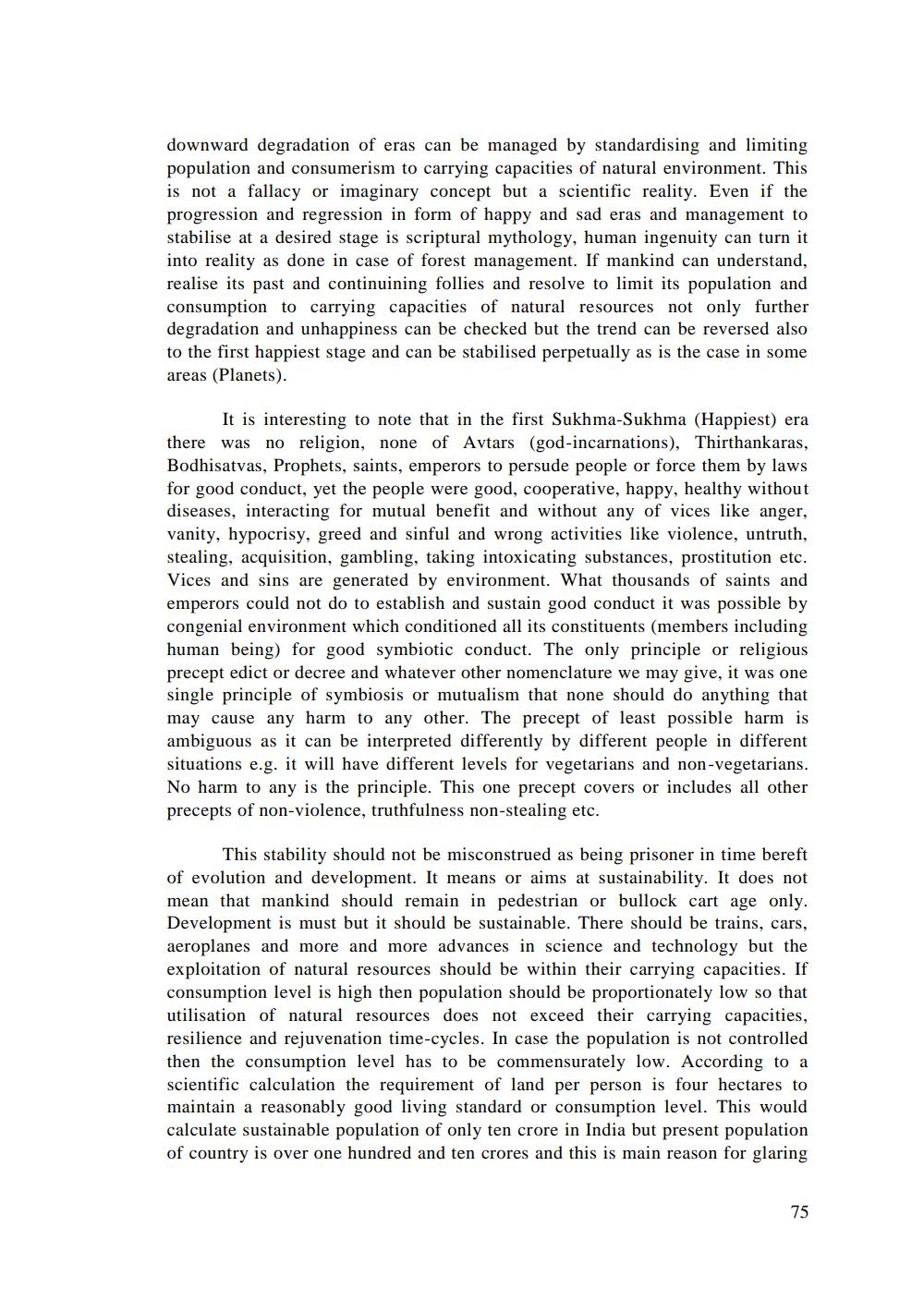________________
downward degradation of eras can be managed by standardising and limiting population and consumerism to carrying capacities of natural environment. This is not a fallacy or imaginary concept but a scientific reality. Even if the progression and regression in form of happy and sad eras and management to stabilise at a desired stage is scriptural mythology, human ingenuity can turn it into reality as done in case of forest management. If mankind can understand, realise its past and continuining follies and resolve to limit its population and consumption to carrying capacities of natural resources not only further degradation and unhappiness can be checked but the trend can be reversed also to the first happiest stage and can be stabilised perpetually as is the case in some areas (Planets).
It is interesting to note that in the first Sukhma-Sukhma (Happiest) era there was no religion, none of Avtars (god-incarnations), Thirthankaras, Bodhisatvas, Prophets, saints, emperors to persude people or force them by laws for good conduct, yet the people were good, cooperative, happy, healthy without diseases, interacting for mutual benefit and without any of vices like anger, vanity, hypocrisy, greed and sinful and wrong activities like violence, untruth, stealing, acquisition, gambling, taking intoxicating substances, prostitution etc. Vices and sins are generated by environment. What thousands of saints and emperors could not do to establish and sustain good conduct it was possible by congenial environment which conditioned all its constituents (members including human being) for good symbiotic conduct. The only principle or religious precept edict or decree and whatever other nomenclature we may give, it was one single principle of symbiosis or mutualism that none should do anything that may cause any harm to any other. The precept of least possible harm is ambiguous as it can be interpreted differently by different people in different situations e.g. it will have different levels for vegetarians and non-vegetarians. No harm to any is the principle. This one precept covers or includes all other precepts of non-violence, truthfulness non-stealing etc.
This stability should not be misconstrued as being prisoner in time bereft of evolution and development. It means or aims at sustainability. It does not mean that mankind should remain in pedestrian or bullock cart age only. Development is must but it should be sustainable. There should be trains, cars, aeroplanes and more and more advances in science and technology but the exploitation of natural resources should be within their carrying capacities. If consumption level is high then population should be proportionately low so that utilisation of natural resources does not exceed their carrying capacities, resilience and rejuvenation time-cycles. In case the population is not controlled then the consumption level has to be commensurately low. According to a scientific calculation the requirement of land per person is four hectares to maintain a reasonably good living standard or consumption level. This would calculate sustainable population of only ten crore in India but present population of country is over one hundred and ten crores and this is main reason for glaring
75




